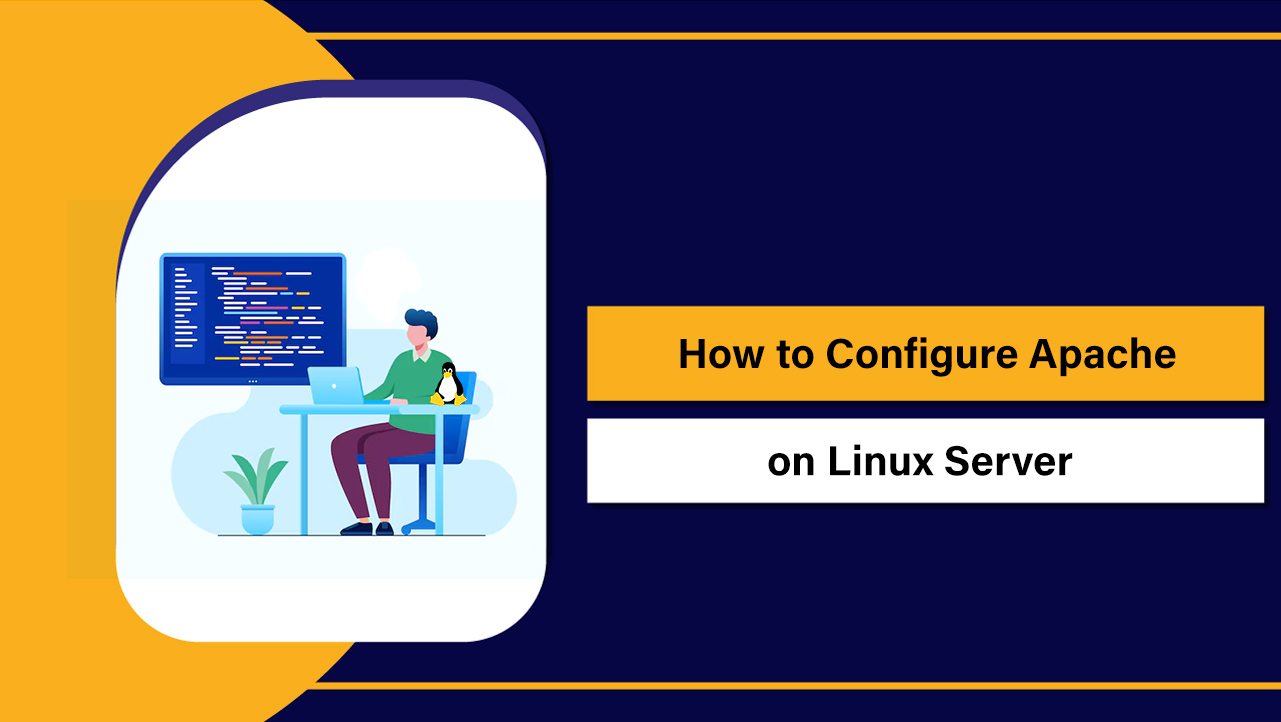HAProxy vs Traefik vs Envoy compares three leading open‑source load balancers and reverse proxies: HAProxy for raw performance and advanced L4/L7 control, Traefik for cloud‑native simplicity and automatic discovery, and Envoy for modern, highly dynamic proxying and service mesh use. Pick based on traffic profile, platform, and operations maturity.
Choosing between HAProxy, Traefik, and Envoy can feel overwhelming. Each excels in different scenarios—from classic web farms to Kubernetes ingress and zero‑trust service meshes. In this guide, I’ll compare them clearly, share real‑world insights, and help you decide the best open‑source load balancer for your stack.
What Are HAProxy, Traefik, and Envoy?
All three are open‑source L7 proxies with L4 capabilities, TLS termination, health checks, and observability. The differences are how they manage configuration, integrate with platforms, scale, and expose features.
Quick Comparison: HAProxy vs Traefik vs Envoy
Feature | HAProxy | Traefik | Envoy
-------------------------|-------------------------|---------------------------------|-------------------------------
Primary Strength | Peak performance, ACLs | Auto-discovery, simplicity | Dynamic, service-mesh ready
Config Style | Declarative (haproxy.cfg)| Dynamic providers, labels/CRDs | xDS APIs (ADS/EDS/RDS/CDS)
Kubernetes Fit | Ingress controller avail| Top-tier Ingress, easy certs | Ingress/Gateway, Istio/Service Mesh
TLS/ACME | Manual/automation via scripts| Built-in Let's Encrypt | External/ACME via control-plane
HTTP/2/3 + gRPC | Yes | Yes | Yes
Canary/Blue-Green | ACLs, weights, stick-tbl| Routers, middlewares, weights | Route matching, weighted clusters
Rate Limiting | Native (stick tables) | Middlewares | Global/local rate limit filters
WAF | Via HAProxy rules/modsec| Traefik plugins/ModSecurity | External filter/WAF integrations
Observability | Prometheus, logs | Prometheus, dashboard | Prometheus, rich tracing (OTel)
Learning Curve | Medium | Low–Medium | Medium–High
Resource Footprint | Low | Low–Medium | MediumWhen to Choose Each Load Balancer
Choose HAProxy if you need…
- Maximum throughput and low latency under heavy L7 traffic.
- Fine‑grained control with ACLs, stick tables, and TCP/HTTP tuning.
- A stable, proven reverse proxy for VM/bare‑metal web farms.
- Simple, self‑contained deployments without heavy control planes.
Choose Traefik if you need…
- Cloud‑native ingress with automatic service discovery and Let’s Encrypt.
- Fast iteration via Docker labels, Kubernetes CRDs, and dynamic providers.
- Beginner‑friendly operations and a built‑in dashboard.
- Solid performance without deep low‑level tuning.
Choose Envoy if you need…
- Modern, dynamic proxying at scale and multi‑cluster topologies.
- Rich HTTP filters, advanced routing, and deep observability.
- Service mesh (e.g., Istio) or xDS‑driven configuration.
- Granular traffic policies with gRPC, HTTP/3, and zero‑trust patterns.
Architecture and Configuration Model
HAProxy: Single binary, powerful config
HAProxy centers around a declarative configuration file (haproxy.cfg). It excels at stable, predictable behavior, with rich ACLs and stick tables for session persistence, rate‑limiting, and anomaly detection. You can reload configuration with minimal downtime and scale horizontally using VRRP/Keepalived or cloud load balancers in front.
Traefik: Providers, routers, and middlewares
Traefik consumes config dynamically from providers (Docker, Kubernetes, Consul, file). Its “routers → services → middlewares” model makes canarying, redirects, and authentication straightforward. Automatic TLS with ACME/Let’s Encrypt is a key advantage for teams that want hands‑off certificate management.
Envoy: xDS APIs and filter chains
Envoy uses listeners, filter chains, routes, and clusters, driven by static config or dynamically via xDS. It’s the backbone proxy for Istio and many service meshes. The trade‑off for its flexibility is higher complexity and the need for a control plane in large deployments.
Kubernetes and Cloud-Native Fit
All three run well in containers. For Kubernetes ingress, Traefik offers an excellent developer experience using CRDs and auto‑TLS. Envoy integrates as an Ingress/Gateway and shines when paired with a mesh. HAProxy also has a mature Ingress Controller, favored by teams who want its performance and familiar rule language.
Performance and Scalability
In practice, HAProxy leads in raw L7 throughput per core with predictable latency. Envoy is close, especially with tuned filter chains and modern CPUs. Traefik performs well for most web workloads, but if you’re chasing single‑digit millisecond p99s at massive RPS, HAProxy or Envoy typically edges it out.
All support HTTP/2 and HTTP/3/QUIC, gRPC, connection pooling, and keep‑alives. Scaling is typically horizontal: run multiple replicas and place a cloud LB (or BGP/Anycast) in front. For sticky sessions, HAProxy’s stick tables are best‑in‑class; Envoy offers consistent hashing; Traefik supports cookie‑based strategies.
Security and TLS
Every proxy here terminates TLS, supports modern ciphers, and integrates with mTLS. Traefik’s built‑in ACME is ideal for public sites and multi‑tenant platforms. HAProxy and Envoy can automate certs via external tooling (e.g., cert-manager, acme.sh). For WAF, HAProxy integrates well with ModSecurity or native rules; Traefik supports plugins; Envoy uses external filters or WAF at the edge.
Observability and Operations
All expose Prometheus metrics and structured logs. Envoy offers the richest distributed tracing (OpenTelemetry) and granular, per‑filter metrics. Traefik’s dashboard is beginner‑friendly. HAProxy’s stick‑table stats and detailed logs are excellent for diagnosing edge behavior. For SLOs, pair any of them with Prometheus, Grafana, and Loki/ELK.
Pros and Cons at a Glance
HAProxy
- Pros: Extreme performance, deterministic behavior, powerful ACLs, mature community.
- Cons: Manual ACME unless integrated; steeper learning curve for dynamic service discovery.
Traefik
- Pros: Easiest ingress, auto TLS, clean CRDs/labels, great for microservices teams.
- Cons: Less low‑level control; extreme‑scale tuning options are fewer than HAProxy/Envoy.
Envoy
- Pros: Highly dynamic, service‑mesh ready, deep observability, advanced routing/filters.
- Cons: Complex; often requires a control plane and experienced operators.
Real-World Examples (Configs)
HAProxy: simple HTTP load balancer
global
maxconn 5000
log stdout format raw local0
defaults
mode http
option httplog
timeout client 30s
timeout connect 5s
timeout server 30s
frontend fe_http
bind :80
http-request redirect scheme https unless { ssl_fc }
default_backend be_app
frontend fe_https
bind :443 ssl crt /etc/haproxy/certs/site.pem
acl host_app hdr(host) -i app.example.com
use_backend be_app if host_app
backend be_app
balance roundrobin
server app1 10.0.1.10:8080 check
server app2 10.0.1.11:8080 checkTraefik: Docker labels for auto-routing
version: "3.8"
services:
reverse-proxy:
image: traefik:v2.11
command:
- "--providers.docker=true"
- "--entrypoints.web.address=:80"
- "--entrypoints.websecure.address=:443"
- "--certificatesresolvers.le.acme.httpchallenge=true"
- "--certificatesresolvers.le.acme.email=admin@example.com"
- "--certificatesresolvers.le.acme.storage=/letsencrypt/acme.json"
ports:
- "80:80"
- "443:443"
volumes:
- "/var/run/docker.sock:/var/run/docker.sock:ro"
- "./letsencrypt:/letsencrypt"
app:
image: nginx:alpine
labels:
- "traefik.enable=true"
- "traefik.http.routers.app.rule=Host(`app.example.com`)"
- "traefik.http.routers.app.entrypoints=websecure"
- "traefik.http.routers.app.tls.certresolver=le"Envoy: basic HTTP listener and cluster
static_resources:
listeners:
- name: listener_http
address: { socket_address: { address: 0.0.0.0, port_value: 8080 } }
filter_chains:
- filters:
- name: envoy.filters.network.http_connection_manager
typed_config:
"@type": type.googleapis.com/envoy.extensions.filters.network.http_connection_manager.v3.HttpConnectionManager
stat_prefix: ingress_http
route_config:
name: local_route
virtual_hosts:
- name: app
domains: ["app.example.com"]
routes:
- match: { prefix: "/" }
route: { cluster: app_service }
http_filters:
- name: envoy.filters.http.router
clusters:
- name: app_service
type: STRICT_DNS
load_assignment:
cluster_name: app_service
endpoints:
- lb_endpoints:
- endpoint: { address: { socket_address: { address: app, port_value: 8080 } } }Decision Checklist
- Platform: Kubernetes ingress? Traefik or Envoy. Bare metal/VM web farm? HAProxy.
- Scale and latency: Chasing ultra‑low p99? Start with HAProxy; consider Envoy later for dynamic needs.
- Cert management: Want automatic ACME? Traefik out‑of‑the‑box; HAProxy/Envoy via cert-manager.
- Service mesh: Going Istio/zero‑trust? Envoy is the standard.
- Operational maturity: Smaller team/new to proxies? Traefik is easiest to run well.
Cost and Community
All are open-source and free to run. HAProxy and Envoy boast large, performance‑focused communities, while Traefik’s community emphasizes developer experience and cloud‑native ease. Enterprise add‑ons exist for each, but you can achieve excellent production results with the community editions.
How We Deploy These at YouStable
At YouStable, we tailor the proxy to your workload. For high‑traffic WordPress and PHP apps on VMs, HAProxy provides superb cache‑friendly balancing and stick‑table controls. For managed Kubernetes, Traefik gives teams fast, automatic HTTPS and clean CRDs. For customers adopting service mesh or multi‑cluster gateways, Envoy is our go‑to.
Need help benchmarking or migrating? Our architects can provision a proof‑of‑concept on your cloud or our managed infrastructure, with dashboards, alerts, and HA built in—so you focus on features, not networking.
FAQ: HAProxy vs Traefik vs Envoy
Is HAProxy faster than Envoy?
For raw L7 throughput per core, HAProxy often has a slight edge and very predictable latency. Envoy is close when tuned, and can outperform in scenarios that benefit from its advanced routing and connection management. Your results depend on filters, TLS settings, CPU features, and traffic mix—benchmark in your environment.
Which is best for Kubernetes ingress: Traefik or Envoy?
Traefik is the easiest ingress to adopt, with automatic Let’s Encrypt and friendly CRDs. Envoy‑based gateways shine for enterprises using Istio, advanced routing, or multi‑cluster topologies. If you want quick wins and simplicity, pick Traefik; if you need a future‑proof gateway for service mesh, pick Envoy.
Can HAProxy be used in Kubernetes?
Yes. The HAProxy Ingress Controller brings HAProxy’s features—ACLs, stick tables, observability—into Kubernetes. It’s a strong choice if your team already knows HAProxy or you want its performance characteristics inside the cluster.
Does Traefik support gRPC and HTTP/3?
Yes. Traefik supports gRPC, HTTP/2, and HTTP/3/QUIC. Ensure your entrypoints and TLS settings allow HTTP/3, and validate client support. For gRPC, configure clear routes and enable h2 where needed.
When should I choose Envoy over HAProxy?
Choose Envoy when you need dynamic, API‑driven configuration (xDS), advanced HTTP filters, deep observability, or plan to run a service mesh (e.g., Istio). For simpler edge load balancing where peak performance and straightforward ops matter, HAProxy is often the better fit.
The Bottom Line
There’s no universal “best” open-source load balancer—only the best for your constraints. For classic web workloads and predictable speed, choose HAProxy. For cloud‑native ingress with minimal toil, choose Traefik. For large, dynamic environments or service mesh, choose Envoy. If you want a hands‑on comparison in your stack, YouStable can help you test and deploy the right one.



